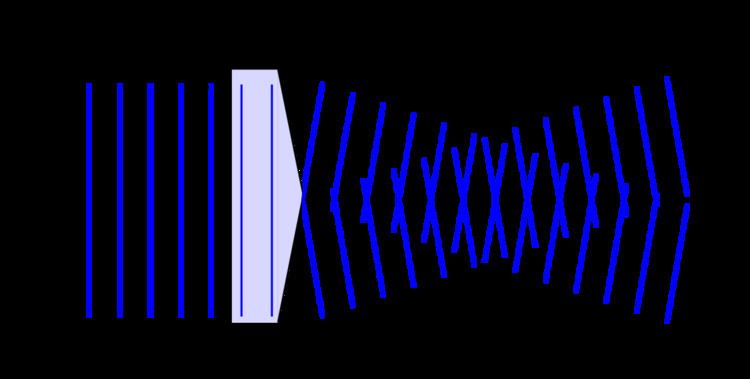 | ||
A Bessel beam is a field of electromagnetic, acoustic or even gravitational radiation whose amplitude is described by a Bessel function of the first kind. A true Bessel beam is non-diffractive. This means that as it propagates, it does not diffract and spread out; this is in contrast to the usual behavior of light (or sound), which spreads out after being focussed down to a small spot. Bessel beams are also self-healing, meaning that the beam can be partially obstructed at one point, but will re-form at a point further down the beam axis.
Contents
As with a plane wave, a true Bessel beam cannot be created, as it is unbounded and would require an infinite amount of energy. Reasonably good approximations can be made, however, and these are important in many optical applications because they exhibit little or no diffraction over a limited distance. Approximations to Bessel beams are made in practice either by focusing a Gaussian beam with an axicon lens to generate a Bessel–Gauss beam, by using axisymmetric diffraction gratings, or by placing a narrow annular aperture in the far field.
Properties
The properties of Bessel beams make them extremely useful for optical tweezing, as a narrow Bessel beam will maintain its required property of tight focus over a relatively long section of beam and even when partially occluded by the dielectric particles being tweezed. Similarly, particle manipulation with acoustical tweezers was achieved with a Bessel beam that scatters and produces a radiation force resulting from the exchange of acoustic momentum between the wave-field and a particle placed along its path.
The mathematical function which describes a Bessel beam is a solution of Bessel's differential equation, which itself arises from separable solutions to Laplace's equation and the Helmholtz equation in cylindrical coordinates. The fundamental zero-order Bessel beam has an amplitude maximum at the origin, while a high-order Bessel beam (HOBB) has an axial phase singularity along the beam axis; the amplitude is zero there. HOBBs can be of vortex (helicoidal) or non-vortex types.
X-waves are special superpositions of Bessel beams which travel at constant velocity, and can exceed the speed of light.
Mathieu beams and parabolic (Weber) beams are other types of non-diffractive beams that have the same non-diffractive and self-healing properties of Bessel beams but different transverse structures.
Acceleration
In 2012 it was theoretically proved and experimentally demonstrated that, with a special manipulation of their initial phase, Bessel beams can be made to accelerate along arbitrary trajectories in free space. These beams can be considered as hybrids that combine the symmetric profile of a standard Bessel beam with the self-acceleration property of the Airy beam and its counterparts. Previous efforts to produce accelerating Bessel beams included beams with helical and sinusoidal trajectories as well as the early effort for beams with piecewise straight trajectories.
